Notebooks – Acquiring Habits with Intellectual Effort
NOTE BEFORE THE POST : This post originally began as a book discussion introduction. If you arrived here looking for the original book discussion it is no longer retained (at the book author’s express wish). What remains are my thoughts and the ideas that sprung from Charlotte Mason’s writing on her notebooks as found in her 6 volumes and also from PNEU Programmes of study.
“Will the mothers who are doing this {Mother’s Education} course make it their duty to hand on the knowledge they get, as they get it, to {other} mothers…whether in the way of asking a few mothers to tea and chat, or in talk with a single mother in the course of cottage visits, or in mothers’ meetings; anyway will they make “pass on” their watchword.”
Charlotte Mason, 1897, as written to the members of her Mother’s Educational Course
I hope I preserved ideas to “pass on” that are worthy of sharing. Resources and links that were originally shared as part of the book discussion are here: Notebooks – Resources.
Keeping notebooks with Charlotte Mason is not a new idea for me, but there are so many rich connections I’ve discovered in keeping notebooks that follow the same spirit and structure as Charlotte Mason. There has certainly been an evolution within my own understanding though. And part of that evolution leads me to the conclusion that the journey (as well as the fruit) of building notebooks with Charlotte Mason seems one of those inviting paradoxes – it is rich and deep: inviting connections and yielding fruit that shows a visible attentiveness to those ideas that stood out to one child. The paradoxical part of this equation comes when an understanding of approach is embraced – there is no overcomplicated, over-thought, over-wrought aspect in Charlotte Mason’s idea of a notebook. She saw them as a vehicle for thought, a worthy and fitting place for expanding the idea of a narration. In their essence, they fit hand-in-hand with the bedrock of a CM education: the narration – a simple telling back.
“Narrating is not the work of a parrot, but of absorbing into oneself the beautiful thought from the book, making it one’s own and then giving it forth again with just that little touch that comes from one’s own mind. — Essex Cholmondeley, The Story of Charlotte Mason, p. 125
Charlotte Mason herself chose many different forms that a notebook could take – from a Nature Notebook to the Commonplace – she seemed to have a keen sense of when a notebook might fit as the best vehicle for a narration.
“Everyone has known always that children should read good books and should ‘reproduce’ in one form or another.” — Essex Cholmondeley paraphrasing Charlotte Mason, The Story of Charlotte Mason, p. 137-138
It seems she was always open to the idea of a notebook in any pursuit or book within the scope of her curriculum. Far from being an afterthought, or a mere ornament, she valued them. In the Charlotte Mason Digital Archives, I found this lovely letter from Charlotte Mason to a local Botanist (ARMITT Box PNEU2A, File pneu11, Items i1p1pneu11-i4pneu11). CM had secured from a local expert in Botany and Entomology an agreement to assess the work of some of the students in her teacher’s college – think of it as a way of submitting information to an expert in a field and requesting their evaluation – an evaluation from an outside, unbiased source with credentials and knowledge to evaluate the subject matter at hand. And what did she choose to send to this expert as representative of her curriculum and the student’s work? Essays highlighting a student’s study? No. A book report? Multiple choice quiz? No – you know Charlotte Mason too well to believe that any of these choices would even find a place in a CM day. She sent the student’s notebooks. 3 nature notebooks. And of course the local Botany and Entomology expert was rightly impressed, requesting to keep one of the notebooks to show to others as a source of inspiration (he hoped to inspire this right and good habit of intellectual effort within schools of his area).
That example is just one of so many that show that these notebooks within CM’s curriculum were seen by her as integral (not peripheral), chosen (not dictated), and valued (not cast aside but rather a rich embodiment of content), and she hoped, I believe, that some of these notebooks at least, would be lifelong.
[soliloquy id=”84354″]
Blue and Orange Edgewise Journal from Orange Circle Studio
Notebooks follow the same form and fashion as everything else in CM’s curriculum, so if you’re familiar with Charlotte Mason’s principles of attentiveness and narration, then note booking will be a simple extension:
- Bring your full attention to the matter (whether it’s a book being read or the nature walk)
- Tell it back (narrate it) within the form or notebook given
- The child chooses the matter to narrate
- The parent/teacher helps in acquiring the habit
- The value lies in the process, not the end result
It begins at the beginning
Think of the number of times you considered something – a question, a challenge – and there was the idea. The idea formed and then another slipped in and became more prominent…worth following. And on it went…until you understood a thing and the original idea had connected itself to so many other ideas that came after that, in a sense, gave more life and fullness to the original idea. Our education takes place like this. It isn’t complicated or in need of a teacher’s manual or even a lengthy tutorial. And Charlotte Mason understood this. We all desire to know. And part of that knowing is…
seeing the idea
recognizing it as something worth keeping
worth recording
worth revisiting
timeless
made a part of us as we translate it
transform it
in the telling back
Enter – the notebook. The idea of adding thoughts and things to some kind of paper has always been attractive to me. I have more notebooks than I could list. Perhaps one of my favorites, one of my treasured notebooks, is my Charlotte Mason Commonplace notebook, a place for some of my favorite Charlotte Mason ideas and quotes to land.
The blank page – full of potential
I’ll be unapologetic – I’m a paper girl. Paper seems to deserve a place of prominence in notebook keeping to me – just because of the quiet and value in the tangible act of considering first, then writing by hand as a very personal extension of oneself. However, I do see a place for technology in notebooking. Charlotte Mason herself was an advocate for moving forward, staying current. I wonder what she would think of the great accessibility and affordability of so many worthy books through the digital medium? I can’t help but think that technology can provide yet another canvas for keeping notebooks, much as the photographer uses film to tell a story, a digitally rendered notebook can be a place for keeping.
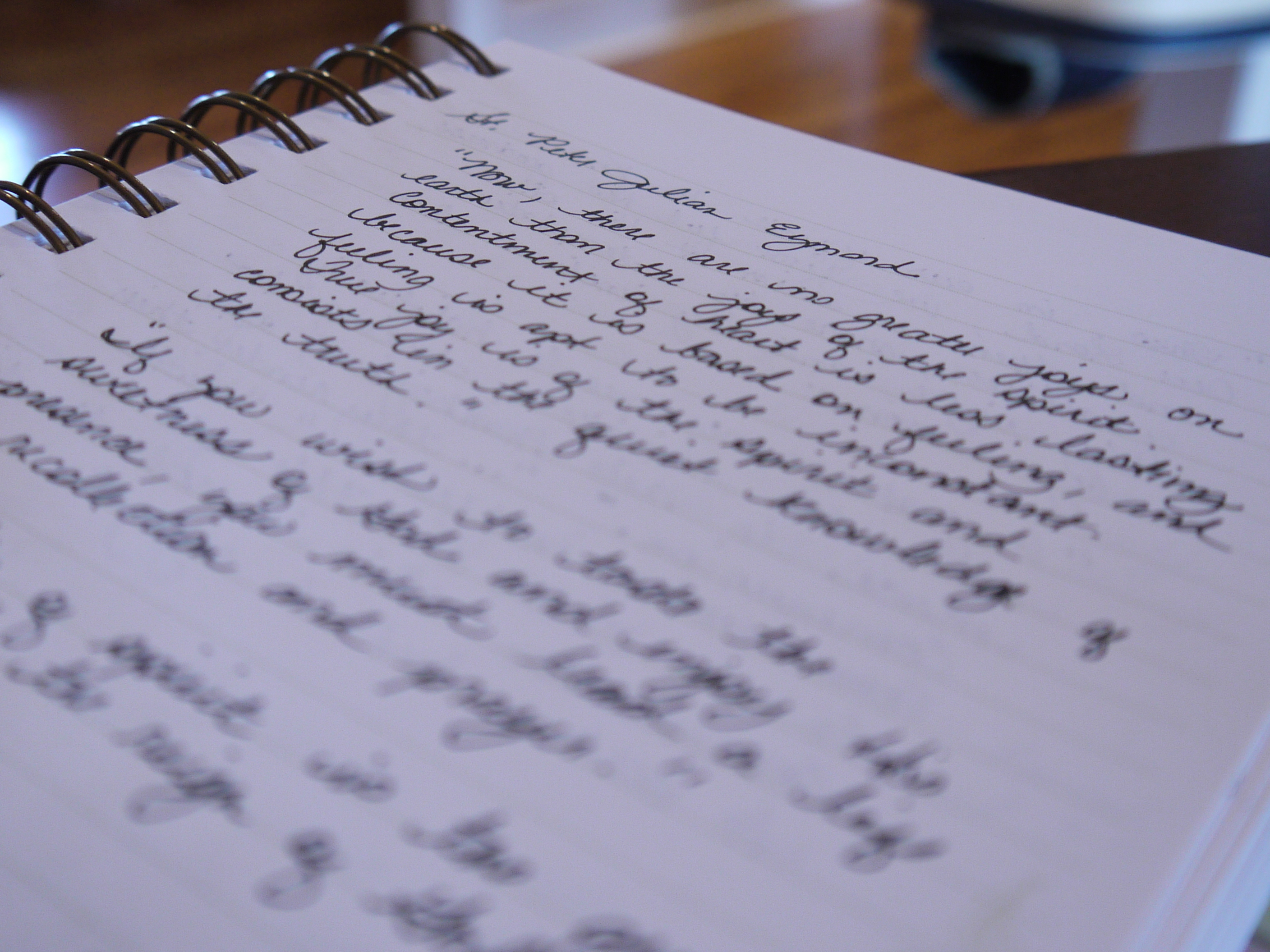
Following Charlotte Mason, that which is valuable and worthy is given to the child – just as we insist on rich, living books – the Good and the Great Books – given to the children. Notebooking doesn’t need to be something we over-think…something requiring special matching binders…or special paper. It is simple and unpretentious. It is a blank page full of potential. It is a vehicle for recording encounters – encounters that may one day give way to further connections.
Nature Notebooks
Whoever has not in youth collected plants and insects, knows not half the halo of interest which lanes and hedgerows can assume.”
{Charlotte Mason, Home Education}
If there is one idea that seems to be universally attractive, whether a home educator embraces a structured Charlotte Mason education that embraces the balanced whole, or prefers something of an inspired Charlotte Mason education, or ANY philosophy of education – the Nature Notebook seems to find common appeal. {I’m confining my thoughts and points to a structured Charlotte Mason education which seeks to implement both philosophy and method as put forward in her 6 volumes.}
Lists
I think we all think of nature notebooks and we instantly envision something akin to Edith Holden’s, The Nature Notes of an Edwardian Lady, or Janet Marsh’s Nature Diary. And those are two excellent sources of inspiration, to be sure! But, we don’t always have time for dry brushing every specimen, and for some, this idea can become crippling. Perhaps it’s encouraging to know that at times, Charlotte Mason’s students’ notebook Nature Notebook entries took the form of — a list! (Here, you can see a CM student, Margaret Deck’s, nature notebooks complete with two lists in the back – a bird list and a flower list!) If you know me, you know how much I appreciate the list! I find this idea of keeping lists as part of our nature notebook quite refreshing in its simplicity. A couple of years ago, I shared with you a printable I made that we keep on a clipboard near our bird-watching windows – Birds Spotted – Portrait. This list has been a good companion, and it brings quiet joy to read over it and find the different birds we’ve spotted over the years.
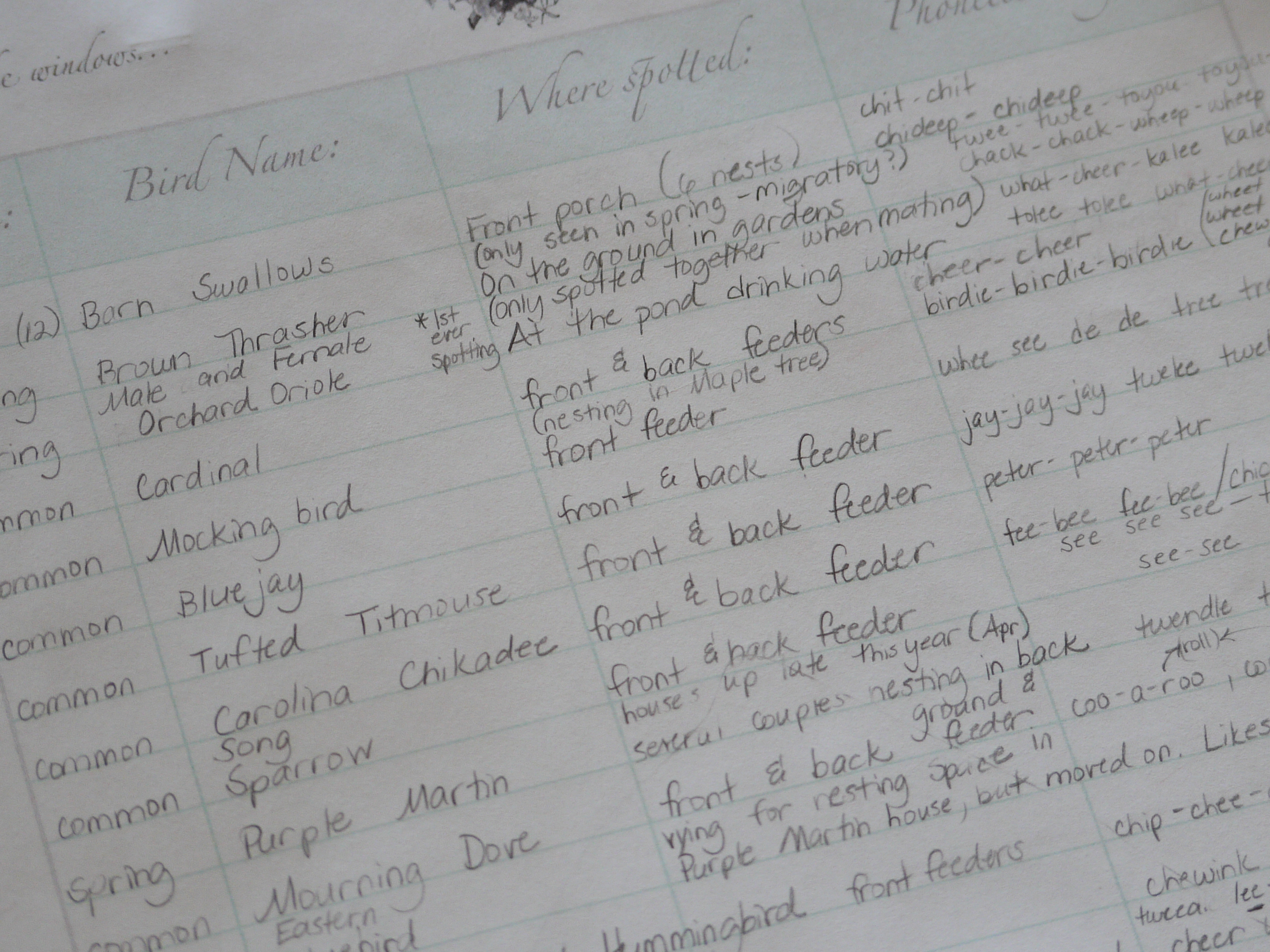
We’ve enjoyed the opportunity to record the birds we see regularly, when we see them, and my younger children really enjoyed finding ways to record the phonetic songs of the birds. So, knowing that I was already “list-making” in the spirit of Charlotte Mason, I came up with a few other simple lists that can easily be printed and secured inside the cover of a current nature notebook – a place for a list – or you can keep them on a nature study clipboard, which sometimes works better for us. And then, when a list is complete we add it to our Book of Firsts, or you could add it to an individual child’s notebook, too. I thought you might enjoy the lists. Here you are:
- Birds Spotted – Landscape – the landscape version has extra options for recording additional details such as the Latin name for the bird.
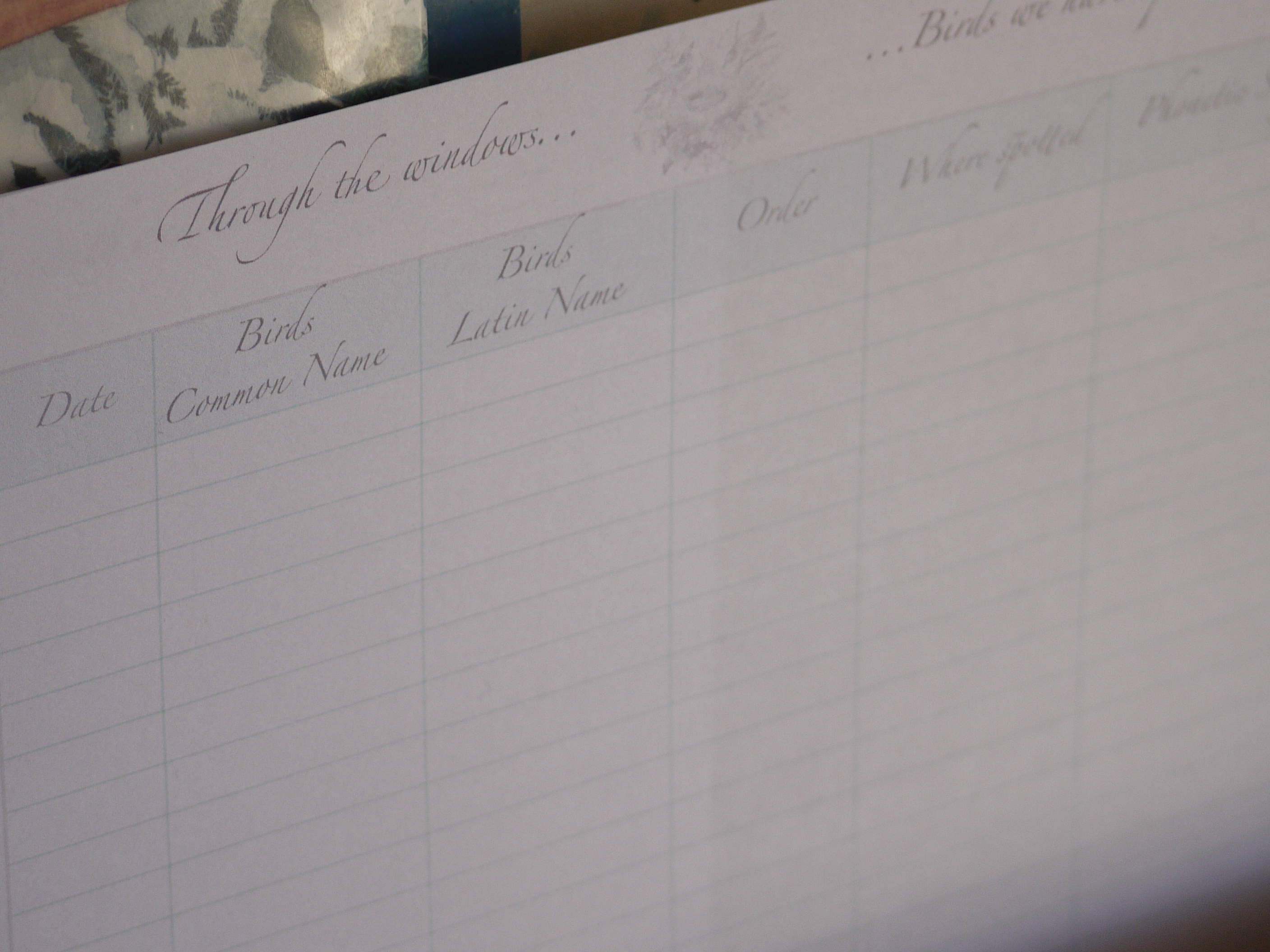
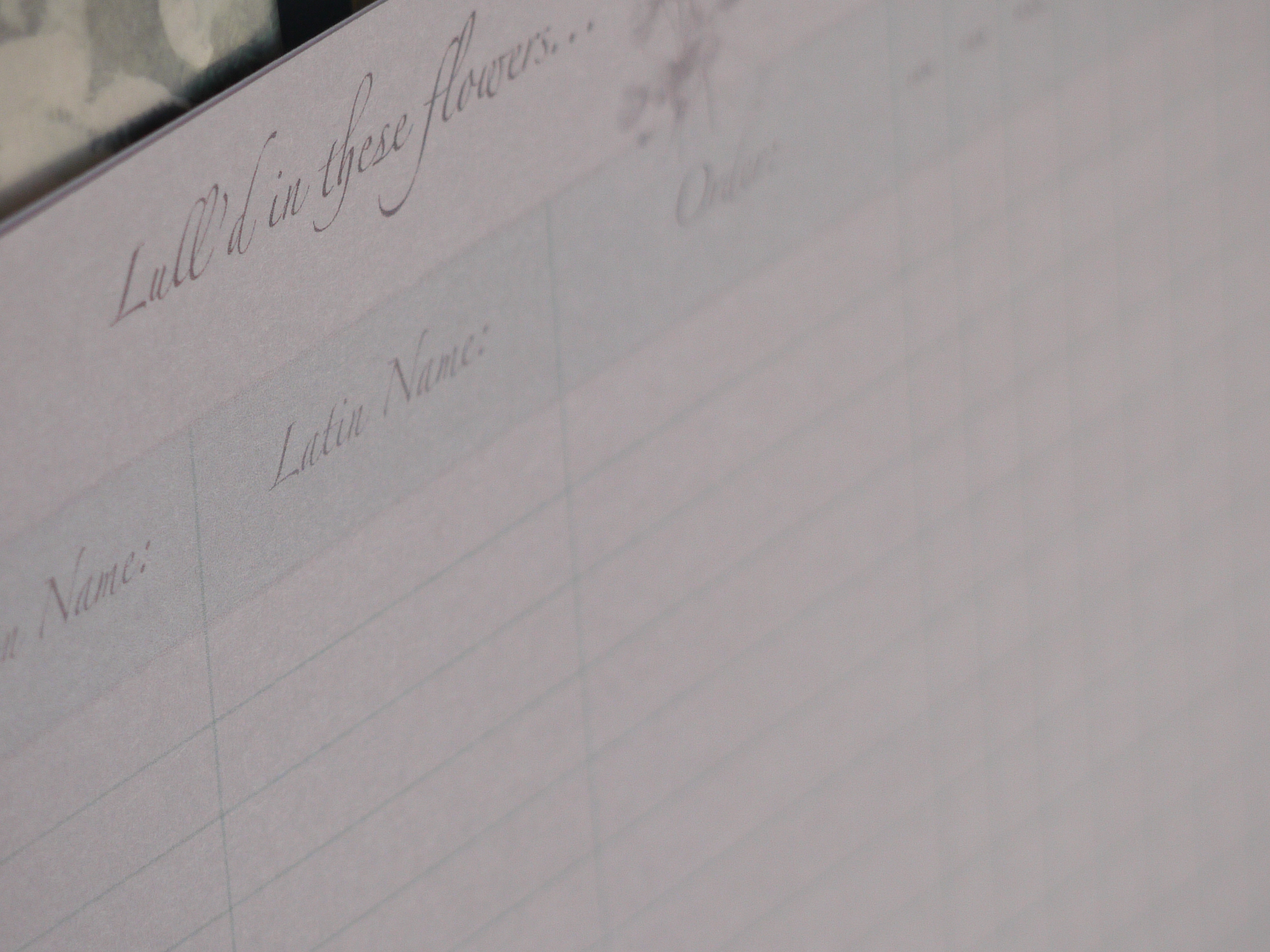
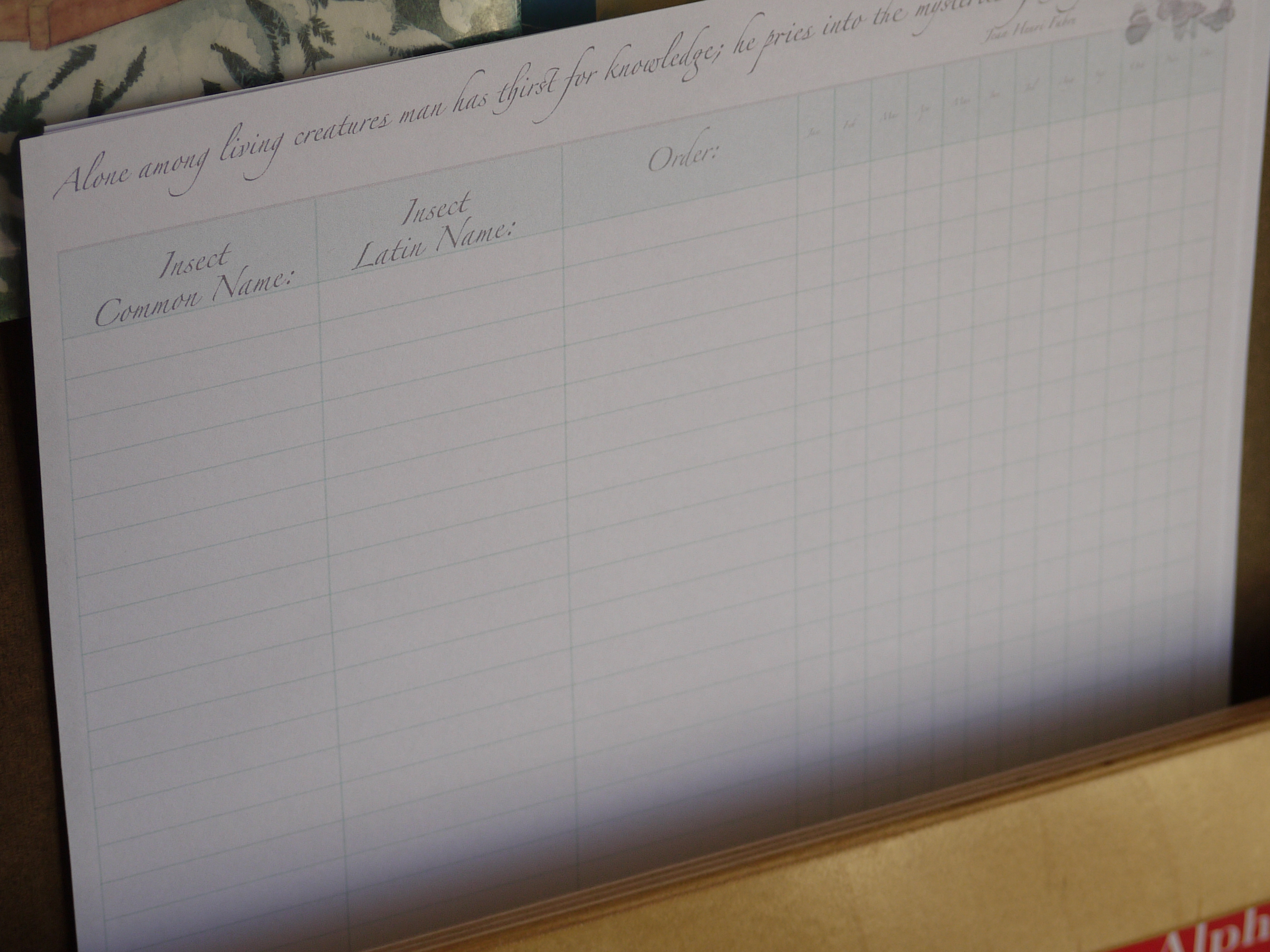
- Butterflies:Insect List – CM – Nature Study bright – this form is identical to the form above, it’s just formatted using brighter colors.
I think the idea of a list is especially appealing because it’s simple. If you’re just beginning to move toward a Charlotte Mason philosophy and method of education, and you’re wondering which notebook to start with – why not start with the nature notebook? Add a couple of simple lists. Do consider learning dry brush technique for watercolors because it’s wonderful!
{Excellent resource is an Eve Anderson DVD, Nature Study where she demonstrates a nature walk and HOW TO dry brush! Best instruction DVD on this topic I’ve ever encountered!! The DVD is available through the Perimeter school webstore. Here is the Nature Study DVD, and I would like to recommend the 3-DVD set of Eve Anderson’s instruction which contains Nature Study, Picture Study and Narration. This set is NOT to be missed!}
Alongside the idea of simplicity in approach in our nature studies and nature note booking, I found I wanted to set a few goals for myself. I’d like to be more intentional — perhaps I can…
- resolve to learn alongside – no excuses!
- consider our yearly natural history plans carefully, being quite intentional about our reading and excursion choices for the year
- generate a simple outline of themes and ideas at the beginning of the year to help me plan the days
- list seasonal occurences I’d like to highlight with the children
- research a lovely booklist of natural history selections – some for the home library, some to find at the local library
- consider all the ages of children in my family – combine age groups when possible – provide ideas and suggestions that fit each age grouping
- research local guided nature walks, nature centers, conservancy centers as possible field trips
- consider meeting with other like minded families – perhaps for a signs of spring walk and again for a signs of autumn walk
- set out {strewing} simple books and materials in attractive displays that INVITE investigation
I’m sure there are other ideas that foster a more intentional approach with this, yet remain grounded in simplicity! What ideas do you have for nurturing observations of natural history and nature study notebooks?
The Commonplace Notebook
A commonplace notebook is really quite simple in its essence. It is a group of ideas that are valued, noteworthy, or striking – compiled by one person in a book. It is unique to its creator, and usually (but not always) themed. The entries in a commonplace can be recipes, poems, quotes, prayers, song lyrics, scientific expressions, mathematical formulas…anything really, or at least, anything that the person keeping the commonplace finds valuable and meaningful to them. One could put forward the argument that our modern day blogs are essentially, a digital commonplace. Interesting thought, no? It is a place to record thoughts and ideas from other valued and esteemed authors that find a place in our hearts and minds. Here is an example – an early entry in my commonplace book:
Wonder is the beginning of wisdom. — Socrates
I am most familiar with the commonplace from Charlotte Mason’s writings. Of course, there are many, many historical figures that made use of a commonplace, but since we’re really concerning ourselves with Charlotte Mason’s notebooks, I wanted to provide a little background and context for how she encouraged their use with her students. We’re introduced to the idea in Volume 5 of Miss Mason’s series, Formation of Character. The title of this volume gives us our first clue that Miss Mason thought the commonplace notebook a useful tool for gathering ideas and thoughts that are edifying, uplifting: character building. This thought is very classical, in the sense that all education should point us toward virtue and right. In this volume in particular, Miss Mason is speaking of habits which might assist in independent discoveries which point a young person toward virtue and good character. (And just for clarity, this chapter is directed to “young maidens at home”, but the idea is certainly not meant to be confined to young ladies.) Before Miss Mason introduces the commonplace notebook, she sets the context necessary for understanding why she is introducing it in the first place:
“…she must acquire habits of intellectual effort on her own account.”
This selection is essential – the child is encouraged to build “habits of intellectual effort.” A habit – an action practiced regularly. So, the context with which the commonplace book is about to be suggested has been set – the child does this “on her own,” it is an “intellectual effort,” and it should become a habit, practiced regularly. Here is the recommendation from Miss Mason regarding commonplace books. From Volume 5, p. 260:
“It is very helpful to read with a commonplace book or reading-diary, in which to put down any striking thought in your author, or your own impression of the work, or of any part of it; but not summaries of facts.”
Outside of the mention in Formation of Character, which sought to offer suggestions in shaping and forming the child’s personality and character, Miss Mason found the commonplace so valuable a notebook that it actually found a solid and regular foothold in her curriculum. We find it clearly listed in the curriculum for PNEU Programme 1922 (listed under the Literature sub-heading for Forms V and VI (about grades 10 – 12)
“Keep a Common-place Book for passages that strike you particularly…
Interesting to note that this is listed in the same way in other Programmes, so we know it was a regular feature and that makes sense if this “intellectual effort” is to become habit. I suppose that this notebook in particular has gained such a strong foothold in my imagination because it signifies that education is life long, it is self-motivated, and it continues to be living. I have seen how the Commonplace is a stepping stone into the Grand Conversation for my older children. And for me, it has been good to form myself in this “habit of intellectual effort” in my own keeping and gathering of ideas that broaden my view.
Notebooks as Fostering Relationships…
…with ideas, persons, connections formed between ideas
What is important to tuck away in viewing Charlotte Mason’s notebooks is that all of them are within context: the context of a person’s reading or experience. And they respect the person: there is no directing, no Teacher’s Manual (none needed!), no pointing toward what is missing or left out – the child sees and keeps what the child desires. Period. And it’s good. These Charlotte Mason notebooks aren’t a compartmentalized addition to a curriculum. They are within. They add richness and value to the great feast of ideas. All of Charlotte Mason’s notebooks provide a place that encourages a person to hold and keep that which is seen, heard, experienced, read, known…in a narrative form. And through that observation and notebooking, relationships form.
History Notebooks
If you spend some time studying Charlotte Mason’s approach to Language Arts, you can clearly see a very unified and connected approach. All of language arts is within context (rather than compartmentalized separate subjects) and each new layer of language arts builds upon the other. And in looking at each of her notebooks closely, I see the same thing. These tools aren’t over-complicated or full of distracting peripheral things. It’s straightforward, supported and structured by the parent/teacher, chosen by the child, always in context, and completed as a way of narrating. As always, it meets the child – right where the child is – while gently stretching, and (important part coming up here—> ) done consistently, yields amazing fruit and habits.
Before outlining the notebooks used in Charlotte Mason’s history curriculum, it’s probably worth mentioning that history is the pivot upon which a Charlotte Mason curriculum turns. And it’s also helpful to consider that CM chose to “name” levels of education slightly differently than we do today, so I thought I’d include the following reference as a translation tool for you:
PNEU Forms/Grades (PNEU = Parents National Education Union, CM’s educational organization)
- Form I ~ Grades 1 – 3
- Form IB (age 6): 1st grade
- Form IA (age 7-9): 2nd grade & 3rd grade
- Form II ~ Grades 4 – 6
- Form IIB (age 9): 4th grade
- Form IIA (age 10-12): 5th grade & 6th grade
- Form III ~ Grade 7 – 8
- Form IV ~ Grades 8 – 9
- Form V ~ Grade 10 – 11
- Form VI ~ Grade 11 – 12
From Charlotte Mason’s own writings (in her 6 volumes) we know of the following history recording forms that Charlotte Mason used:
- Table of History/Centuries {Form IA – II} – downloadable form for the Table of Centuries (*based on description in Home Education, CM, p. 292)
- Consists of names
- No dates
- Suggests a “graphic panorama” to a child
- Begins to convey events in time order
- Century Chart {Form II +} – see downloadable samples below
- Book of Centuries {Form IIA – around 10 years old}
There are other history tools that are mentioned in The Parents Review articles: The Teaching of History, and The Teaching of Chronology, and also in History.
- Century Chart – {detailed in The Teaching of Chronology by Dorothea Beale}
- A chart of 10 horizontal squares by 10 vertical squares
- Composed of mnemonic symbols which the child chooses to represent a person or event
- A framework which can be large or small
- Filled scantily at first, gradually expanded
- Adapted to any purpose: political history, church history, scientific discovery
- shows a country’s history at a glance
- compact
- dates are not the focus but the general relationship of events to each other
It’s hard to pinpoint the ages/forms of use since Ms. Beale doesn’t specify more than using words such as “young children” and “older students”, but here is the order which she presented the variations of this Century Chart:
{some of these forms may have a downloadable form-to-share that I made based on descriptions or images from the PNEU article}
- A Child’s First Century Chart of the child’s own life. This is the point at which to begin the study of history according to Beale, not chronologically, or at THE Nativity, but rather at the child’s own nativity. {Century Chart – Form I – A Child’s First}
- Century Chart – Fit historical events/world history into centuries using symbols, at first the young child focuses on national history {for Beale and CM, that would have been English history} alone in the chart. {Century Chart – Form II – III}
- Map of Centuries -this is a map on one page that represents all centuries {1st – 21st} with the child choosing one overall theme for that century and simply writing it into the block. {Map of Centuries – Form II}
- A Century Chart on a larger scale with room for ruling and marking important events. Beale talks about using colored paper to designate the 4 periods of history:
1-5th centuries is the period from Augustine to the Fall of Rome
6-10th centuries is the period of barbarian settlements or tribes into nations
11-15th centuries is the Medieval period
16-21st century is Modern History
Each “period” is a different color of paper
- Finally, Beale makes {what I believe is} a reference to the Book of Centuries for the “grown-up students who are reading a short period”
exercise book is given with 10 ruled lines and the student writes in words about anything they wish to remember.
acquire a knowledge of dates without learning them
The following two history charts are very similar in description – though they are called by separate names, I believe they each describe the same chart –> a flowing stream of history diagram/map:
- History Diagram – {primarily described in History} –
- described as a map of of history, much as a map is fitted to geographical locations. This history diagram is interwoven with geography.
- “The breadth and width then of History, the ground plan so to speak, must coincide with the longitude and latitude of the world map.”
- “… each individual man, each society of men, has its definite geographical environment; that the activities of each display themselves within a definite limited portion of the earth’s surface, and finally that every act of man, every detail of history, has its definite geographical locus”
- shows an evolution, succession, movement of change through history
- “Our historical diagram will thus consist of a flowing stream”
- Time Stream Chart – {primarily described in The Teaching of History}
- Represents both the chronological and geographical relations of history
- Length of paper ruled by 10 (horizontal) lines (the space between each line representing a definite cycle of time, probably about 10 years or so)
- Geographical relations are represented by parallel longitudinal (vertical) bands)
And then there is the following history recording form that is mentioned in Programmes for Form IV on the curriculum outline:
- Calendar of Events {Form IV and up} –
- This tool is listed on Programmes for Form IV and older listing that Form’s curriculum in this way: “Read the daily news and keep a Calendar of Events.”
- Essentially a simple journal of current events.
- The format isn’t specified but implies the importance of engaging in daily world events through reading and a simple recording of the child’s choice of something significant on a calendar.
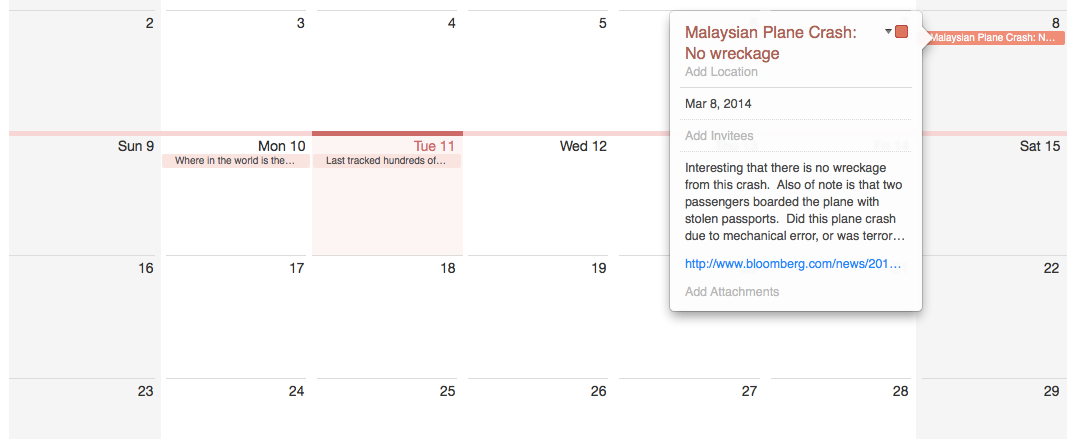
{Above is an example of my 12th grader’s Calendar of Events. We use iCal for this notebook. We made a shared calendar named….wait for it...calendar of events. Each day, she chooses one headline to enter, leaves a short synopsis for me, and a link for me to follow. We discuss later in the day. My calendar alerts me every time she posts. I can add events, too, if I choose. I think this is an excellent example of a digital notebook.}
History Tools listed in order
In the Parents Review article History: Teaching Practically Considered, H.B. proposes a definite progression in the use of practical tools in a Charlotte Mason curriculum.
- Stage 1 {age 3 – 8}
- begins concretely
- story, fairy tale, and heroic deeds of old form the substance of the history teaching at this age
- time is very abstract to a young child; be patient with their growing understanding of time
- use pictures/illustrations frequently at this age
- focus on family history
- Stage 2 {age 8 – the time that century charts might be complete. Perhaps around 10/11 when a child would begin a BOC?}
- are ready for a more systematic approach to history
- begin with the present {time as directly known to us} – don’t start teaching from the past moving forward
- use a history chart of family history as the child’s first practical tool for understanding history
- Another simple chart is described – using ruled lines on a page – to assist a child in seeing their own history, their family’s history…on paper. This seems similar to the Child’s First History Chart described by Beale, but is simpler in that it doesn’t hope to represent an entire century, but rather the ruled lines can better show more details of a family life. But the concept is the same, especially the concept of completing as many family/child details as possible and then beginning to work backwards to important historical events and then adding a few of those in. After completing this first chart…
- A second chart is begun, the Century Chart.
- The child completes a century chart for every century going back to the Time of Christ, adding in picture/mnemonic images as he comes across them in his reading.
- This provides a “mountain top” view of history. After this is completed the child moves on to:
- Stage 3
- Suggested Historical Studies of:
- Bible History
- Greek History
- Roman History
- History of our own land {instructs us in patriotism and is necessary in becoming a good citizen}
- Europe and World History
- Use a more condensed chart {about a yard in length} to focus on a period of history
- Facts recorded should be few and key/significant
- This chart contains “moments of action” which become hooked into a continuous chain of associated links.
- Suggested Historical Studies of:
Just to help me order these charts and tools in my own mind, I’m listing them as they would be used chronologically. {Obviously, there is some overlap with some of these tools.}:
Form I
A Child’s First Century Chart
Form II
Table of History
Century Chart
Map of Centuries
Book of Centuries (Form IIA – around 10 years old)
Form III
Century Chart
Time Stream Chart
Book of Centuries
Form IV
Calendar of Events
Book of Centuries
For resource samples and images of our own Book of Centuries, see the Notebooks – Resources post.
The Art and Habit of…Noticing
It’s perhaps not always obvious how we each become so accustomed to seeing things that we begin to look past them…enough so that eventually we begin to not see them. Have you ever noticed you do that in your kitchen? Or your entry way? Until one day, there you are, standing there, wondering why in the world you store the bowls on a shelf that requires a ridiculous stepping away from the activity at hand. Or why you placed the coffee cups on the side of the room opposite the coffee maker {perish the thought!}. And of course, if we must be honest, in the myriad of things going on in a given day, we may sometimes even look past our children {have you ever done that? when they’re talking to you, and you’re sort of nodding along, but not really engaged?}, or look past our duties {let’s be honest – self-discipline and priorities are easy enough to disengage from when there is something more enticing drawing our attention away – yet it’s in fidelity to the ordinary duties that we work out our salvation. ouch}.
This “looking past something” is the anti-thesis of the habit of attention Charlotte Mason pounds home time and time again. Bring your full attention to this reading. It sounds good, and you’ve heard it before, but don’t let this be one of those phrases you’ve seen a thousand times so that you begin to look beyond its impact and deep meaning. In the quiet moments, when we’re tuned in, engaged, relating with an author and an idea – an idea stands out. The idea is worthy, and through the habit of attention, we see it. We don’t look past. So we narrate it – in whatever way we choose. Perhaps silently, interiorly {this is a habit CM alludes to and I might not have believed it except that my 12th grader now regularly lets me know that she narrates her reading silently – to herself.} Perhaps we narrate aloud. Perhaps as an illustration. Or perhaps…in the form of the notebook.
In considering Charlotte Mason’s philosophy, one cannot help but be struck by the organic flow and intimate connections (science of relations) between the methods and their fruit. There is a wholeness to this education as life. Notebooking is no exception. Interesting, too, in being able to draw connections and parallels, is Mason’s clear understanding that because we are made in the Image of God, we are made to create through the expression of our imagination. How delightfully this fits with a CM idea of notebook keeping!
What was wonderful about childhood was that anything in it was a wonder.
{G.K. Chesterton}
There can be no doubt that Miss Mason intuitively understood this – that notebooks awakened and nurtured the child within {each of us…regardless of age}. A child’s eyes are always open to wonder. Which is why we must consider that the formative process of keeping a notebook is not a peripheral tool to be shelved or set amongst a category of other handy tools that may be put away after the elementary years have rolled past. It is, as Mason’s philosophy tells us and continues to show us, a life.
Hello wonder, meet standing aside.
As I mentioned, one of my favorite thoughts of all time, that I affirm on a daily basis as I watch and live alongside my own children comes from G.K. Chesterton, “What was wonderful about childhood is that everything in it was a wonder.”
Through a child’s eyes, everything is a wonder. I think of my own children – of quiet time spent, observing them at play, or in the out-of-doors and this observation of Chesterton’s is validated again and again. As a home educator, one of my paramount goals is to nurture this wonder that belongs in childhood! How? Charlotte Mason writes of the role of the teacher in her book, School Education (p. 66):
“Education is the science of relations, or, more fully, education considers what relations are proper to a human being, and in what ways these several relations can be best established.”
So, having considered the proper relations, what should the teacher then do? (continued from School Education)
“First, to put him in the way of forming these relations by presenting the right idea at the right time… Secondly, by not getting in the way.”
I think if we marry Chesterton’s understanding of wonder to Charlotte Mason’s idea, we have a simple formula for an education of wonder. Our role then, as teacher, is to nurture it – to provide a place for it in the day so that we may put the child in the way. And if wonder is a delight to be nurtured and aroused, we surely can snuff them out by hovering, directing, suggesting, informing, and structuring them to death. Enter Charlotte Mason’s masterly inactivity – wise and purposeful letting alone. Standing aside. Nurture wonder. Provide a place for it in your day. Let there be enough margin to explore, to wonder quietly, to add to a notebook. And…stand aside. Just as we should very thoughtfully ensure that a CM day includes plenty of margin for our children to explore, appreciate, and notebook, we should, with equal intention…
- Ensure that there is enough margin in OUR OWN (admittedly full) day to model and learn alongside – to re-awaken our own sense of appreciation and perhaps re-introduce us to those “eyes of wonder” we had as a child.
- The materials used should be excellent. This is something I’m firmly convinced of. Cheap materials frustrate children and provide an obstacle. Part of making smooth the way is in providing excellent quality that is attractive and performs with ease. There is nothing worse than a watercolor crayon that crumbles more than it shades.
- Notebooks fit in the “excellent quality” category as well. I didn’t always understand this and sometimes chose “pretty” over “practical” beauty. Notebooks with stiff, thick covers that fold back on themselves with durable, double spiral binding are our favorite. In learning how to find “excellent quality” over the years, I’ve become a bit of a paper nerd. 😉 But it has helped me immensely in judging paper quality. My paper education was easy to come by through simple internet searches – so I encourage you to research paper weight, texture, color, size and shape – all with a view toward the purpose of the notebook and the child using it.
- Clip art, coloring books, coloring pages are put aside. Now…I admit I’m still turning this one over a bit in my mind. I strongly agree with the premise – children should learn to approach that blank page as an invitation to express their own imagination. And, I do see benefit in keeping these other tools off the CM notebooks, or at least sparing in their application. But…I’ve always been a fan of excellent Dover coloring books (especially the history and nature coloring books) and a sparing, but fairly regular use of coloring pages (mostly our Liturgical Year coloring book for Feast Days) and they do find a place in our day. I wonder if they have a place as long as they are outside the notebook? CM says: We trust much to pictures…but without labour there is no profit.” I’ll have to think on that a bit.
- The role of technology – I see the role of technology really setting up nicely in our home. It’s a useful tool, but it isn’t our primary form of notebooking.
- In the past, I’ve allowed color pencils in the Book of Centuries, but as we’ve shifted to a more CM-structured model of the Book of Centuries for this term, I’ve requested that only our excellent drawing pen in black be used. It has been free-ing and my son really enjoys the mono-color sketch. His pages are attractive as the sketches are increasing. There isn’t so much “competition” for the eye, but an overall cohesiveness. So maybe this is just an aesthetic I appreciate?
The habit of note booking is –> set by the teacher/parent
- The general habit of best effort follows the CM student to note booking. This is a habit that is trained, and I have grown in my understanding of how important it is for me to prepare-the-lesson…for note booking, but it makes perfect sense. I prepare the lesson for our nature walks, and nature notebooking, so of course it works best to introduce the habit and its tools. Here are some practical ways to nurture the habit of best effort through preparing the lesson:
- Set out appropriate tools like the notebook and one nice pen per child.
- Remove superfluous materials (like stacks of books, other papers, random stuff)
- Provide enough margin (unstructured time) in the day so that the child doesn’t feel pressured or driven by the schedule, but is free to engage in note booking.
- In the beginning, peg a notebook time to part of your schedule. This can be as simple as notebooking after lunch, or you can list it as part of the schedule and provide a physical peg as a reminder. Below is a sample of a current lesson plan illustrating a few history tool notebooks (for a Form III/IV student):
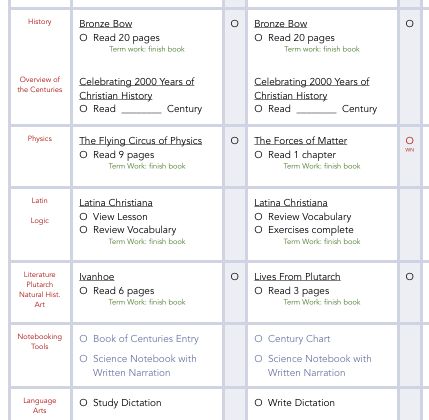
- The challenge with clearly pegging the Book of Centuries to history reading, is that it communicates that the BOC is compartmentalized to History reading only…when there are events in Religion, Science, Geography even, that fit within a BOC. And I don’t want my children to see this as a compartmentalized tool. So, I spent some time considering “pegging” this child’s notebooks in a different way visually. I began building this habit by asking my son to keep his notebook open next to his reading in the hope that he will add an entry immediately after reading, but the most intuitive way that note booking works here is for it to take place after a narration. I guess it just seems that there needs to be that narration and then the subsequent discussion to really lay the foundation for note booking, at least in history.
- A challenge to this habit is time management. This is a particular consideration for my oldest son right now. When he’s mentally focused he does not like having to set something aside and return to it later. I like him having ample time to work, and I see value in allowing a person time to finish a task, but I also see value in moderating and managing time (after all – in real life, I have to manage my day frequently, moving in chunks of time), so this is a valuable part of the habit that we’re working on. We identify the time we’re going to spend and our stopping point. We like using timers here, so sometimes those help arbitrate this boundary.
- The nature notebook, in particular, is an area that benefits from preparation. Set the scene with notebook, tools. Set out any gathered specimens and nature treasures. I even set my iphone out on a simple acrylic easel (like this) so that the photos we took are easy to see. Display things attractively. Remove visual clutter and distractions. Before beginning, provide simple training on the medium used (pen-ink sketch, color pencil, dry brush watercolor technique {- the best instruction for this is by Eve Anderson on her Nature Study DVD offered through Perimeter School. Nothing else has even come close to being as understandable and simple}).
- Pictured below is a prepared nature study lesson – awaiting the children. We’ll sit down, talk about our finds, discuss how we may properly use the nice pen (no smushing hard, no coloring in with it – it’s only for outlining and writing), what we might draw. I’ll encourage the use of the scratch paper – I might even ask the children to narrate to me what they want to write and I’ll transcribe it for them so they can copy it. I’ll read just a bit on the flower (Virginia Bluebells), and then pick up my own Nature Notebook and start my own sketch.
[soliloquy id=”84359″]
The content of note booking –> is determined by the child
- Young children may be unsure of their spelling, so it’s a good idea to write a name/word on a piece of paper for them so that they can copy the correct spelling into a notebook.
- Sketching challenges are difficult for the child that is young, new to note booking, and may tend more toward the perfectionist side. This child is typically and frequently disappointed because their minds eye sees a thing, but their hands don’t represent it as well on paper. Some of this is avoided by judiciously waiting for CM’s recommended age to begin a notebook – in this way a child’s hand has had more time to develop. Sometimes however, further habit training has been required of me in this area.
- It’s important not to make a big deal when a child begins to express their disapproval of their own work. Otherwise, the child can exhaust themselves in the futility of observing what is objectively true – their drawing does not match what they saw in their mind.
- I do find that for the child that is a perfectionist, I grant a little extra leeway.
- Sometimes, I may say (after a sketch has been added and a complaint lodged that a thing isn’t “just so”) that I like their entry exactly as they have pictured it, wouldn’t change a thing, and then move on and redirect attention immediately – giving no more time or space to the concern. I do this because a perfectionist child can get so caught up in their perceived inadequacy that the focus and goal of notebooking (which was in the appreciation and noticing of the thing in the first place) is threatened – it can be overshadowed by the “product” if I’m not careful and allow for tears and woe. So…we move on quickly!
- There are other times when I allow for a re-do. That’s simple – use nice paper that (as much as possible) matches the notebook paper. A simple trick is just rip the back page of the notebook out (trim with exacto for a neat cut) and use existing paper for an exact match. Allow the child to re-do the sketch, paste it carefully and neatly in the notebook over the top of the first attempt. I do this VERY little, and I can’t really tell you my criteria – just that I judge *in the moment* and don’t allow this to be the rule, but rather the exception.
May these thoughts on Charlotte Mason’s notebooks only serve as a point of illumination, a point of departure in your own thoughts, so that perhaps you have been “put in the way” yourself toward considering a notebook as good and worthy, the habit of intellectual effort worth acquiring so that wonder is nurtured.
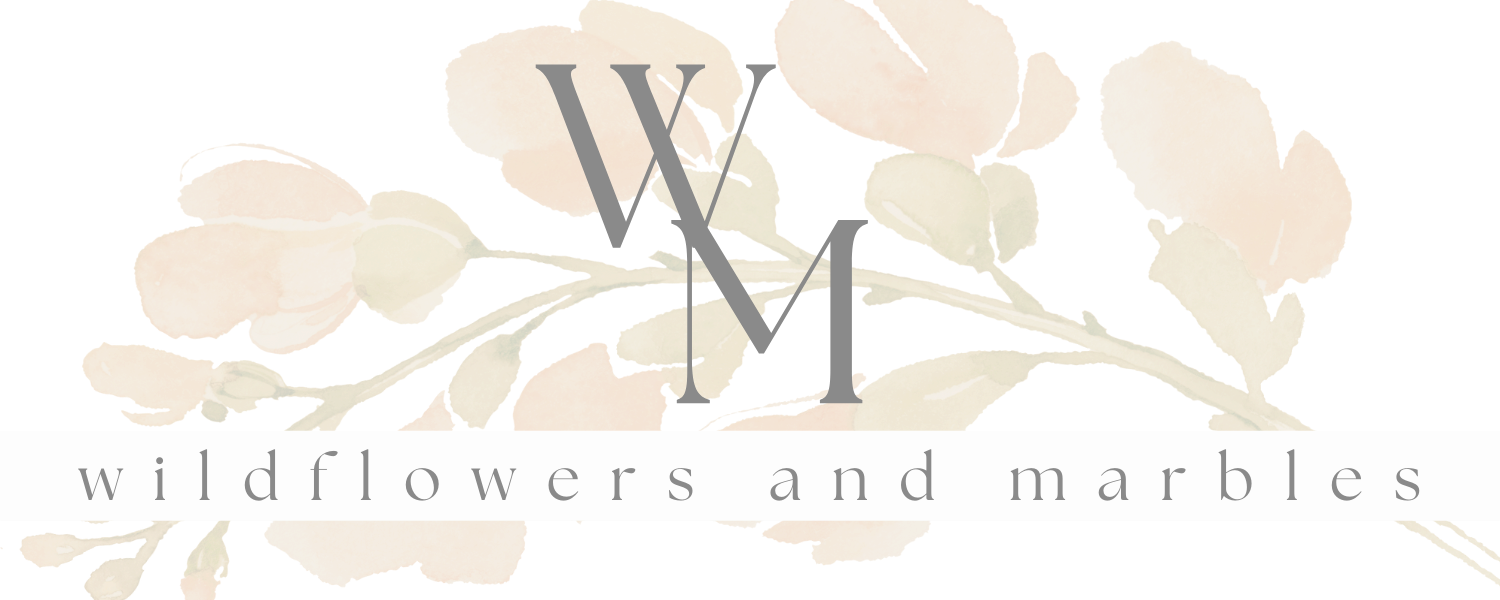
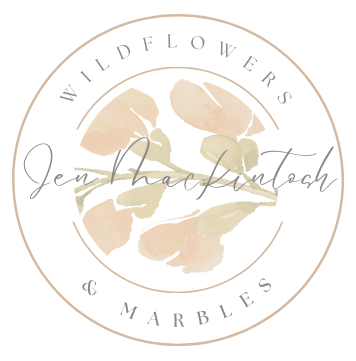


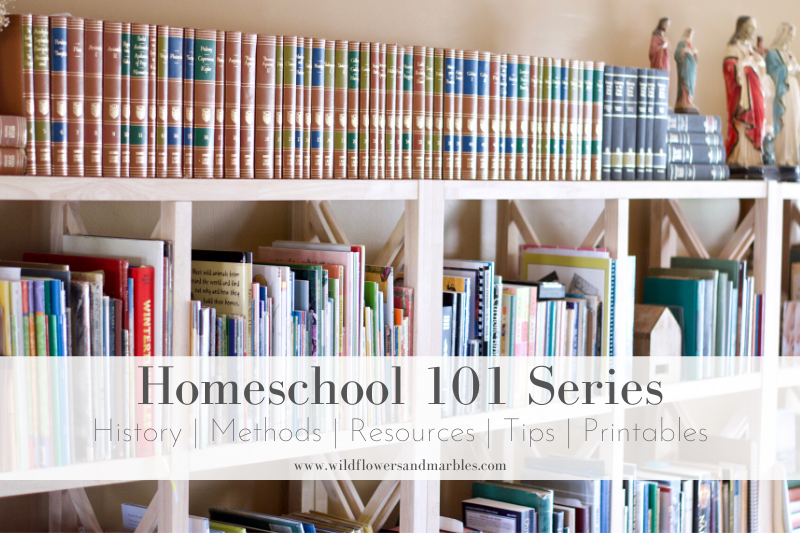
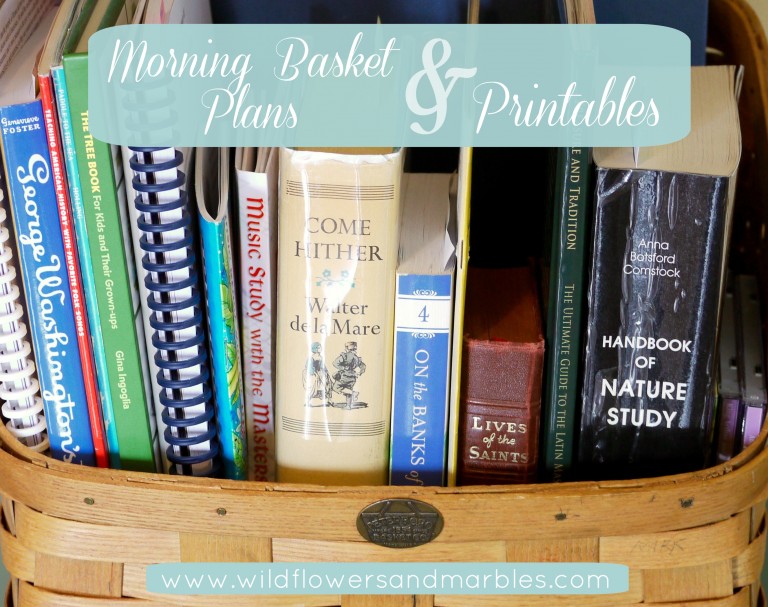
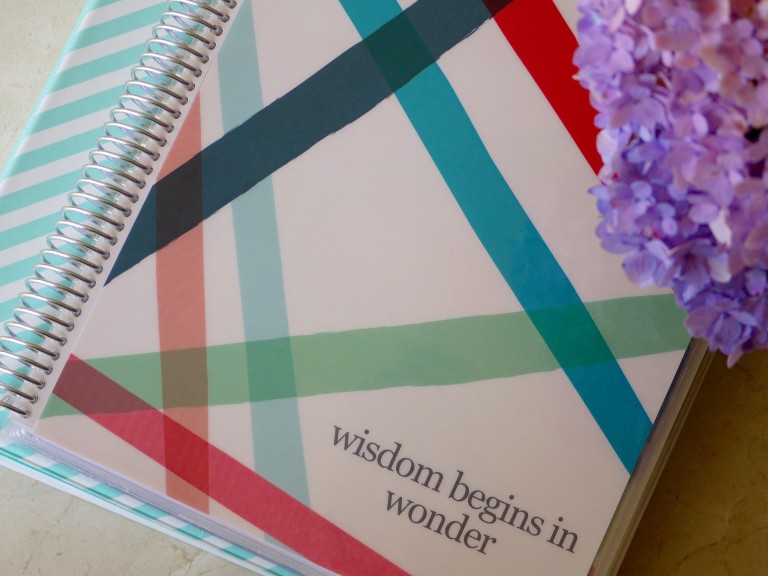
I saw this book mentioned on the 4 Real boards this week and I ordered it through Amazon Prime. I received it today and can’t wait to start reading! I am new to homeschooling and the Charlotte Mason philosophy so I don’t know how much I will be able to add to discussions, but I am eager to see what others have to share and will chime in if I can!
Wonderful, Judith! I’m so glad you have the book and I do hope you’ll join in!
And sadly (pity party here) I’ve been wanting to get it but am not willing t$42 which is what it would cost me to get it to Australia. So reading and gleaning from what you share:)
Ugh, Erin – I know! I was hoping there might be a Kindle option – but not yet! Hopefully soon though! And in the meantime, there should be some great notes from the book with the ladies here reading and sharing! Glad you’ll read along!
I was wondering if I was perhaps missing the point by wanting a Kindle version of the book… I am not outside the US, but I really prefer to read and highlight on my iPad – especially since these days I do most of my reading while nursing. I love the idea of this discussion, but I have serious doubts about my follow up ability!
It is a *little* ironic perhaps – reading a book that is discussing the finer points of a living page…in a digital format. Yet, I really do believe that Charlotte Mason would have embraced digital books as extending the accessibility of books in general, and certainly she would have approved of the affordability in encountering a great many worthy authors! I don’t think she’d ever eschew a book-in-the-hand, but I do think she enjoyed embracing new things, new ideas, especially those that furthered a living education – and words that meet us from a digital format are no less living!
And…on a personal note…I’m preferring reading on my ipad these days, too, Amber! It’s so nice reading in bed since the ipad is self-lit and easy to hold and highlight all in one – I don’t have to turn the light on or grab my pencil which would disturb the baby. So – I’m definitely with you on that one!
I am trying to make it a point to go back and record my electronically highlighted notes into my commonplace book. I like to try and do it when my kids are doing copy work, but that depends on if the two year old can be well occupied and the mood my two month old. As you can probably guess, it doesn’t happen quite as often as I would like!
I know exactly what you mean, Amber!! But I love your goal of commonplacing while your kids do their copywork! I think that’s a really great ‘peg’! I’m going to try it!
I’m so looking forward to joining in. I’ve had the book a few weeks and am trying to find time to settle in and enjoy it.
I’ve had the book since Christmas, Amanda – so this was exactly the motivation I needed to really grab my pen and commonplace book and settle in with it!
I just ordered my copy today so I hope it arrives in time for me to complete the reading before next Thursday, if not, I may just be a few days late! 🙂 Looking forward to reading and sharing together! And by the way, you’re new layout is lovely!
Wonderful, Kim! I’m so glad to have you along!
I don’t have this book yet but I am very much looking forward to the discussion. I have many CM quotes floating around in many stray notebooks but Jen, I love yours!
Oh, I can’t wait to see what kind of CM quotes this inspires you to share, Shari! I’m really interested to see what strikes others – I often learn so much! I’m so glad you’ll join in!
I bought the book a few weeks back and I’ve read (devoured) it once already. Now I plan to go back and read it again with my highlighter and maybe even a notebook to write my thoughts and ideas that I take away from it 🙂 We love our notebooks in our home and this is even more encouragement!! I look forward to following along with this “chat”.
I read exactly like you, Brenda! Read a book through once – then back again with a pencil/highlighter! Definitely grab a special notebook for your next read-through! So glad you’re going to join us!
Erin,
I totally sympathize with your shipping woes… I am in Canada. Shipping is high here too. We were very blessed to be able to have the author bring a few with her when she was passing through a nearby city. One dear lady connected and picked up books for a few of us.
Jen, Thanks for organizing this. I have read through parts of it but am looking forward to re-reading with a group and sharing along.
~lisa
Oh Lisa, I’m so glad you grabbed a copy of the book! It will be fun to have you along!
Hello. I love the pretty changes here at your blog. The new look provides such a peaceful retreat on the internet.
While I will not be purchasing and reading The Living Page (yet), I am looking forward to following this series and seeing what you and others have to say. I certainly would like to at least put your link-up button in the sidebar of my blog. Please do stop by my blog and let me know if putting your button there is okay with you!
Thank you so much for your kind words, Divina! I am eager to sit down and visit at your blog a little later tonight! It’s actually been on my list to “check out” for a couple of days now! I’m so glad you’re following along!
I don’t have a general blog button right now, Divina – but I’ll see about generating one! 🙂 Thanks for asking!
Perfect, Jen! I hope I didn’t cause you to go through too much trouble. 😉
Thank you for organizing this! I have learnt a great deal from your blog and look forward to the discussion. I have ordered my book and hope to receive it in time to read and participate on Thursday.
I’m so glad you’ll be following along jlcasey! Even if the book arrives later than Thursday – please!! – just add your thoughts when you get to! No need to feel pinned in by deadlines here! Let’s just enjoy the book, and share when you can! So looking forward to reading your thoughts!! 🙂
I’m in!
Wonderful! So glad to have you along!
I’m a bit late but I added my post about the preface. I only got a few pages in before I had my first epiphany. I was planning on using The Living Page to help my notebooking but one of the quotes at the beginning changed the way I viewed my daughter’s drawings and learning.
Oh, I’m so glad you joined us! It’s never too late! Isn’t it wonderful how we consider a book will be a help to us…and then it gifts us with inspiration that exceeds our expectations! I’m so glad this happened for you! Please leave me a link to your post – I’d love to read your thoughts!!!
Lovely thoughts. I have been enjoying this one as well – and have started blogging my way through it – so thrilled to be sharing this journey! I am finding this quite inspiring for ideas to use with my teens.
Amy,
I’m so glad to have you along! One of the things that I find inspiring and affirming about Charlotte Mason’s philosophy is that the philosophy and methods meet the child, not the other way around!
So… I saw your note at the top of the page. Does this mean that the book discussion has been cancelled?
Hi Amber,
Thanks so much for asking – yes, the book discussion has been cancelled. I hope to have time to make a more formal announcement post on the blog today. After re-reading my book discussion posts I found that I had a lot of my own thoughts on Charlotte Mason’s notebooks that didn’t pertain exclusively to the book’s content so I distilled those thoughts from the posts and just piled them all here, trying to compile them as neatly as possible. So…that’s what remains here. 🙂 I’m grateful for having had the opportunity to discuss portions of the book with all of you, even if the book discussion doesn’t remain – it was truly edifying for me!
Reblogged this on A Boy, Learning and commented:
So much good information
Where oh where did you get the beautiful cards of the birds that are hanging behind your notebooking table? I love them! First time reader here!
I LOVE those, too! They are Eeboo Counting Birds Wall Cards and I hang them with those removable 3M strips. Check out the other eeboo cards – I have another set hanging in my girls’ room upstairs because they’re just so pretty! And affordable!
Thanks so much for the quick reply! I put those in my Amazon cart along with the flower alphabet ones. They both are so pretty!
Flower alphabet – that’s the set we have in the girls’ room! So charming and dear! You’ll love them!
Thank you for the resources here!! I put the counting bird wall cards on my wish list for the youngest. Lovely!!
I am also curious as to what nature guides you have displayed on that table, too. 🙂
Hi Jen! I’m wondering about your nice sample of a scheduling page you have pictured above. It looks like maybe it was made and used with an app? Or was this a self-made grid? Did you print it out on paper?
Thanks!!
Hi Monique,
The scheduling page sample shared above is a lesson plan I created on my laptop using Pages for mac. It’s a simple table – anyone can make it!
Thank you! I use a pc so I didn’t recognize it. I’ll have to try to create something that nice looking.
Have just printed out your Table of Centuries on A3 paper! I’d made an A4 version in a different style for my oldest two kids but this is going to be my new way! I send people to this post when they have Keeping questions. Thank you!
I’m so glad this works well for you! Thank you for your kind words!